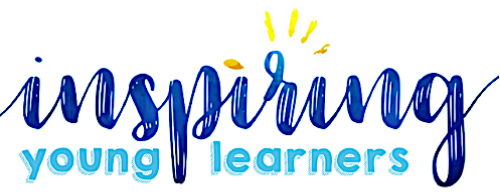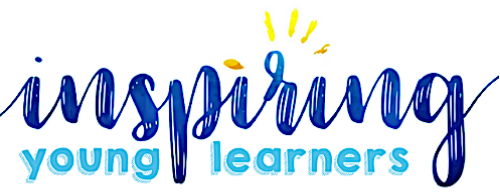If you are new to working with ELLs, then you might quickly become overwhelmed by the number of acronyms used when referring to students who are learning English.
Today, I am going to walk you through many different acronyms you may come across in the field of teaching English Learners along with a cheat sheet you can put in your lesson plan book!
Just a disclaimer, this list is continually changing, and new terms can always be added, but this is meant to be a starting place for you!
So let’s jump right in! Check out the infographic below of the most common terms used for ELLs.
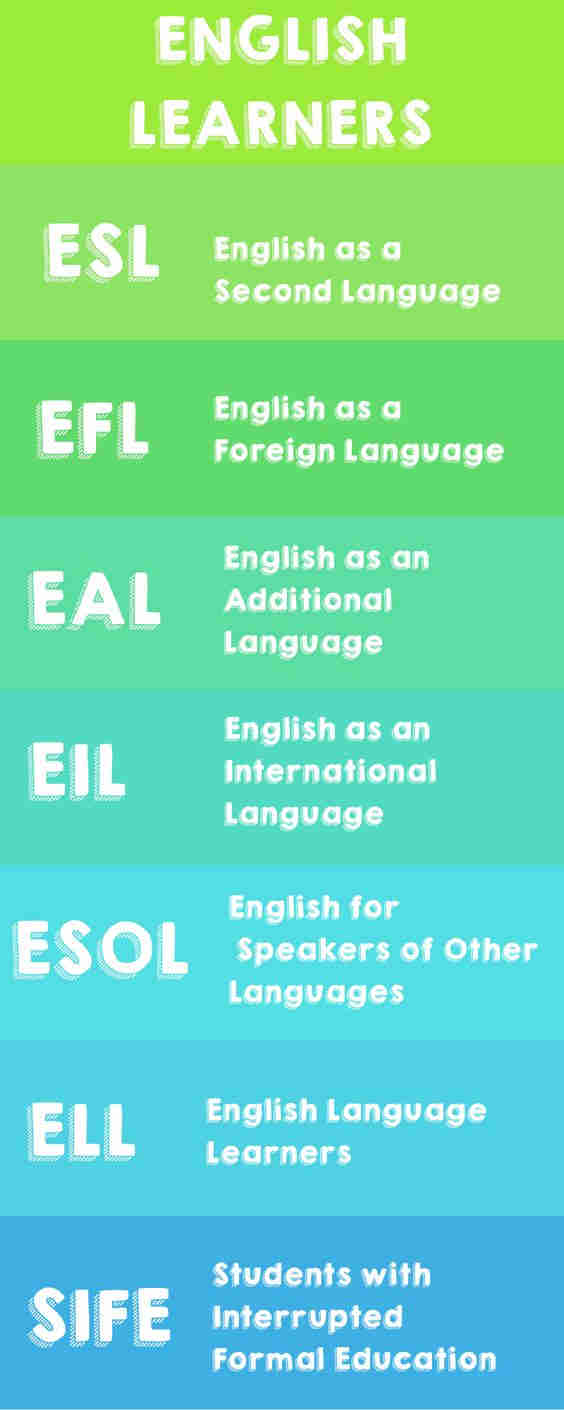
For some reason, the most common term used to describe our English Learners continues to change frequently. There are even more to add to the list such as ENL (English as a New Language), TEAL (Teaching English as an additional language), DLL (Dual Language Learner), CLD (Culturally Linguistically Diverse) and simplifying it to just EL (English Learner).
I tend to stick with ELL because then it covers students who might be learning English as their third or fourth language, not just assuming it is their second language.
Whatever the case, find out what your school uses to refer to English Language Learners and use that one!
Other Terms: Now let’s move on to acronyms for testing and standards that your ELLs may be expected to administer and cover. Again, you will need to check in with your district on what they use, because this differs by state and country.
Depending on where you live, you may or may not have heard of the WIDA Consortium. WIDA is a collaborative effort that began amongst US states to “continually respond to the educator needs and advancing the field of language development.” (https://wida.wisc.edu/) .
WIDA provides different testing and standards for schools to use that belong to the WIDA Consortium. The two most commonly used assessments for ELLs are the W-APT which is a screening assessment used with incoming students to determine their language abilities. The other common assessment by WIDA is the ACCESS for ELLs which is given annually to monitor language progress of all students identified as English learners. Whether or not your state is a WIDA state, I would go and bookmark this website right now: https://wida.wisc.edu
Even if your school is not part of the WIDA Consortium, the website has a wealth of free resources to support all teachers of ELs. One of my favorite resources provided by WIDA are the can-do descriptors which breaks down abilities ELLs should be able to do for each domain and each language level. Click here to check out the can-do descriptors for your grade level!
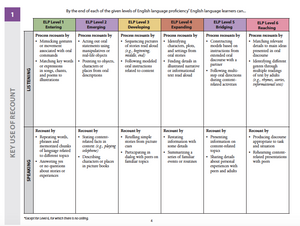
Source: WIDA. (n.d.). Retrieved from https://wida.wisc.edu/
Some other common terms commonly used with ELLs are L1 and L2 which refer to the child’s first and second language. You also might hear the terms BICS and Calps which apply to learning social language and academic language.
All of these terms plus more can be found in your
free Starter Guide to ELLs here!
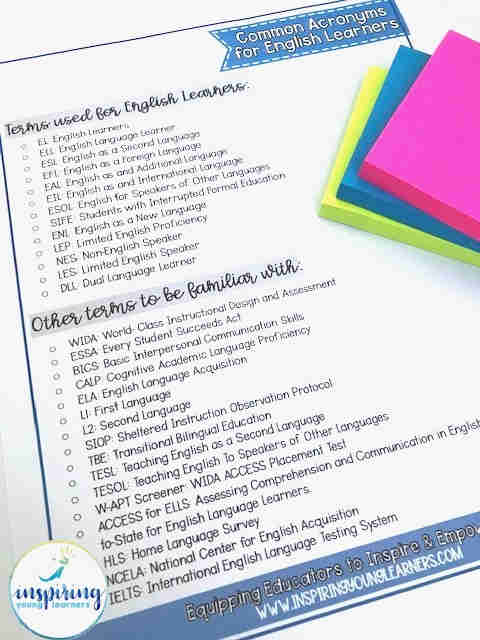
Feeling overwhelmed? Don’t worry! Now that you have a stronger foundation for working with ELLs we can get into the fun stuff! Stay tuned for the next post on going deeper into the difference of BICS and Calps, plus how to focus on both skills throughout the day! I’d love to hear of any acronyms your district uses that I didn’t add to the list! Please share below so we can continue to learn from one another!
